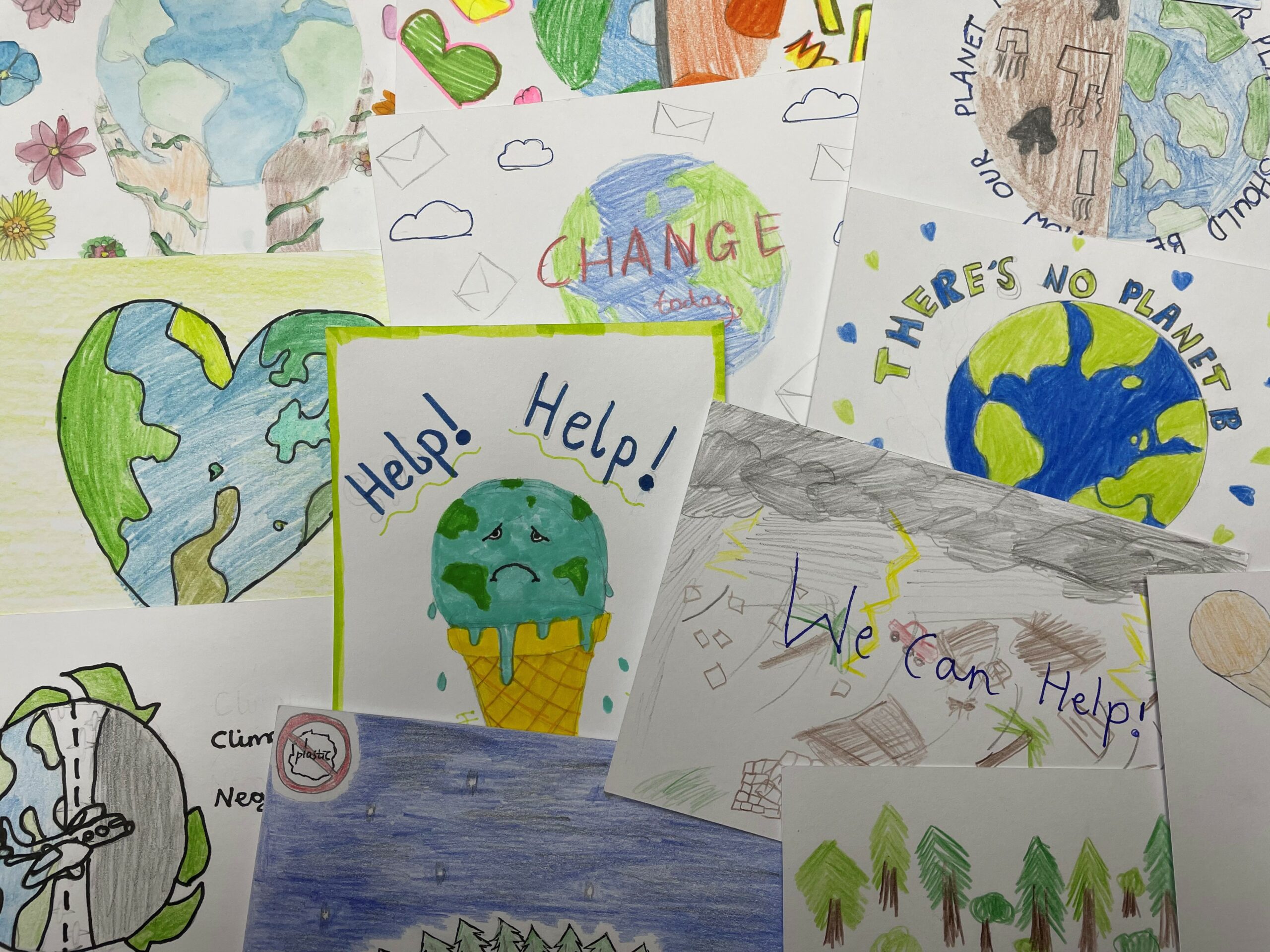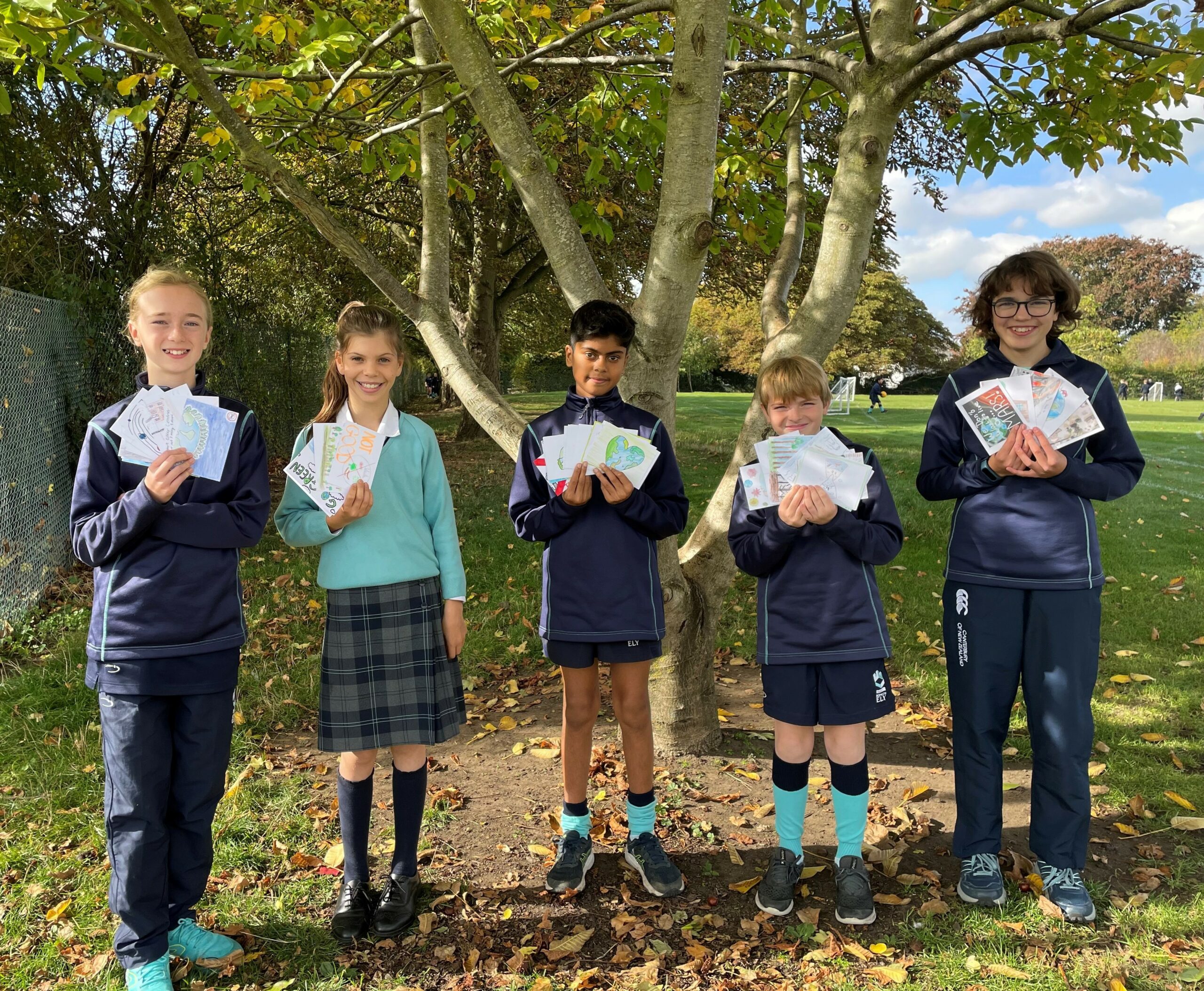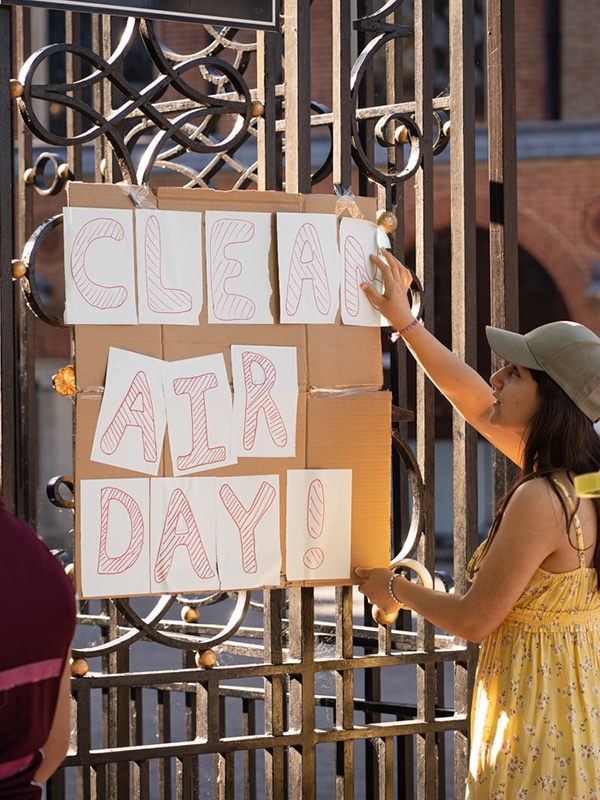Blog
King’s Ely geographers put their climate answers on a postcard

Alan Parkinson
Head of Geography, King’s Ely Junior School and UN Accredited Climate Change Teacher @GeoBlogs
Read the blog
I recently took delivery of a sizeable hardback book simply called ‘The Climate Book’. Its front cover is decorated with the climate stripes created by Ed Hawkins from Reading University. These stripes, tracing the steady warming of the Earth through the last few centuries, are familiar to my students as they decorate display boards in classrooms, are used as wallpaper on interactive displays and laptops, and even appear on my shirt and tie occasionally. Climate change is a recurring theme across our curriculum journey, with Year 6 students spending a term investigating the issue, and older students being reminded of how everything we teach is impacted by the anthropogenic changes we have made to our atmosphere.
‘The Climate Book’ is a compendium of articles curated by climate activist Greta Thunberg. Our students are also told about other climate activists, such as Vanessa Nakate and Quannah Rose Chasinghorse-Potts, whose appearance on the cover of National Geographic sits in our geography magazine rack. The book explores the science of climate change, past (in)action and what we need to do now in a concerted effort to reduce the worst predicted impacts. In the first lesson of each academic year, we look back at the geographical events that happened over the summer. This year, these stories were dominated by temperature records being broken, drought, extreme weather, and wildfires. We include hopeful and positive stories across the curriculum as well, aware of the potential for climate anxiety with a relentlessly negative narrative of the future. Our unit based on the late Hans Rosling’s ‘Factfulness’ book explores success stories of global collaboration to provide balance. We also refer to Dipo Faloyin’s book ‘Africa is not a Country’ when discussing climate justice.
 During 2021-22, I was proud to have served as President of the Geographical Association. My theme for the year was ‘Everyday Geographies’. In Greta Thunberg’s conclusion to the book, she explains how we use 100 million barrels of oil every day. She discusses the consequences of our everyday actions, but also the extent to which any individual action is dwarfed by the actions of certain industries. She mentions the 2021 incident in the Suez Canal with the container ship ‘Ever Given’ getting stuck. In our ‘Geography of Stuff’ unit, we explore the importance of students considering their links to ‘fast fashion’, ‘fast furniture’ and the need for a circular economy. In Year 4, our students are introduced to the importance of shipping containers in their lives, including our Learning Support buildings called ‘The Hive’, which are made from recycled shipping containers.
During 2021-22, I was proud to have served as President of the Geographical Association. My theme for the year was ‘Everyday Geographies’. In Greta Thunberg’s conclusion to the book, she explains how we use 100 million barrels of oil every day. She discusses the consequences of our everyday actions, but also the extent to which any individual action is dwarfed by the actions of certain industries. She mentions the 2021 incident in the Suez Canal with the container ship ‘Ever Given’ getting stuck. In our ‘Geography of Stuff’ unit, we explore the importance of students considering their links to ‘fast fashion’, ‘fast furniture’ and the need for a circular economy. In Year 4, our students are introduced to the importance of shipping containers in their lives, including our Learning Support buildings called ‘The Hive’, which are made from recycled shipping containers.
Our Year 8 students investigated Sharm-el-Sheikh, the venue for COP27 – some have visited previously for holidays – and talked about its relative inaccessibility except by air (with over 30,000 people attending how can this be a sustainable event?) and also the acceptance of Coca Cola as a sponsor.
 A small part of King’s Ely Junior will be present at the event, as we sent hundreds of postcards created by students, complete with individual messages and designs to the climate negotiators thanks to John McLaverty and the Oxfam GB campaign team. I know several people who will be attending COP27 and hope to invite them to speak to students – whether remotely or in person – after they return. Later this term we hope to welcome Alice Oates as a guest speaker to discuss her work in Antarctica: an area amongst the most impacted by the climate emergency. This comes shortly after the recent UNESCO report that predicted the total loss of ice masses in Africa and many other parts of the world by 2050.
A small part of King’s Ely Junior will be present at the event, as we sent hundreds of postcards created by students, complete with individual messages and designs to the climate negotiators thanks to John McLaverty and the Oxfam GB campaign team. I know several people who will be attending COP27 and hope to invite them to speak to students – whether remotely or in person – after they return. Later this term we hope to welcome Alice Oates as a guest speaker to discuss her work in Antarctica: an area amongst the most impacted by the climate emergency. This comes shortly after the recent UNESCO report that predicted the total loss of ice masses in Africa and many other parts of the world by 2050.
The climate emergency will impact the lives of every student we teach to some degree. We each need to do all we can, and as geography teachers we can do more than many by ensuring our curriculum has lots of opportunities to explore the impacts of the climate emergency and the collective actions we need to promote and participate in.
References
Climate Stripes can be found here https://showyourstripes.info/s/globe
All the references associated with the articles in the book can be found here https://theclimatebook.org/
Geographical Association website: http://www.geography.org.uk
Resources from the Royal Meteorological Society: https://www.metlink.org/resource/ks3-geography-egypts-construction-problem/
UNESCO Glacier report: https://unesdoc.unesco.org/ark:/48223/pf0000383551
King’s Ely Geographers blog https://geographyteacher2point0.blogspot.com/ – also on Twitter @KingsElyGeog
Related articles
-
Blogs
Taking Eco Action -
Case Studies
UCS Green Impact Society Leading The Way -
Case Studies
Sustainability at St Helen’s -
Case Studies
Protest has turned to action at Putney High School -
Case Studies
Changing the environment - A school in transition


